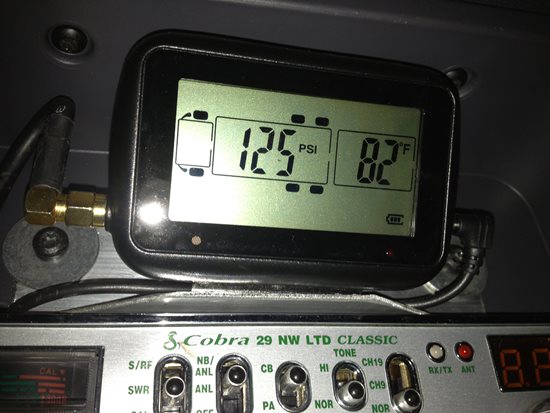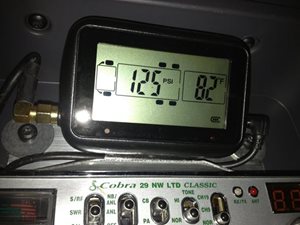
How is the best way to check tire pressures? I like to use a quality gauge that can be calibrated. At least once a week the tire pressures need to be checked with the gauge. In the mean time, how is it done? Some use a "tire thumper", some a hammer, some just walk by and look at them. Is there a way to tell the difference between a fully inflated tire and a tire that is 15 lbs. low by hitting it? From what I’ve learned, there is no way some one can tell the difference. You can tell if it is flat because it sounds hollow, but you cannot tell if it is low without a gauge.
Tire industry professionals say, if a tire is 15 lbs. low it's considered flat. So how can we tell? Years ago there were several rollover accidents in SUVs caused by tire blowouts. The cause of these blowouts, from what I understand, was the tires were wearing so well they were lasting a very long time. Since most people don’t check their tire pressures regularly, and the tires were lasting longer than one would expect the tires were being driven in a low-pressure condition. Knowing that low pressures are the number one cause of blowouts, this explains the cause of the blowout and the resulting rollover crashes. The low-pressure conditions may be caused by a puncture, or it may just be the natural leakage of the tire/wheel assembly.
Anyway, this prompted action by some manufacturers to create an affordable tire pressure monitoring system to put into automobiles. The aftermarket manufacturers have created systems to retrofit to any vehicle or combination of vehicles. This is where the trucking industry fits in. TST, Truck Systems Technologies, of Cumming Georgia, has, what I consider the best, most affordable system available for trucks. Not only does it give you a constant rotating display of all programed tire pressures, it will also give you the temperature of each tire programed.
Now when doing a pretrip inspection, it is easy to get an accurate tire pressure just by pressing a button on the monitor. Sometimes, one does the proper pretrip, all tires are at proper pressure, and we take off driving. Miles down the road we pickup some road debris, and develop a slow leak. The TST monitoring system will tell us if we are getting a low condition, or if its a faster leak it will let us know if we need to pullover now, so we don't have that blowout. At any time, a glance at the monitor and we know what the pressure and temperature is at any wheel position. To learn more about TST see their website here:
Truck System Technologies (TST)

Monitoring temperature could also tell us if there is a problem with a wheel bearing or a brake overheating. These conditions will cause the temperature of the wheel end to rise above normal operating temperatures.
Keeping tires at proper inflation levels will help them last longer and improve fuel economy. These two items are some of the biggest expenses we have, so saving money here is a no brainer in my book. There is also the safety aspect, properly inflated tires provide better traction, handling, and ride, what more could you ask for.
To find out what pressures your tires need to be, you can Google the brand of your tire and look for recommended inflation pressures. Each tire model, size, and load rating has a different pressure recommendation for the weight you are carrying. The pressure on the sidewall is for maximum weight at that wheel position. Ideally, one would change pressure for each load configuration, but we all know that's not going to happen. I use the average loaded weight of the axle for my tire pressures.